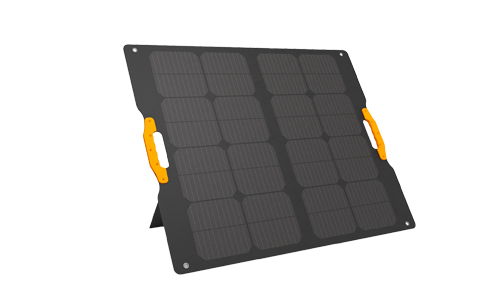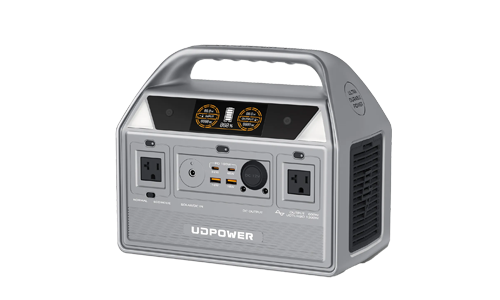The Ultimate Guide to Buying a Portable Power Station
ZacharyWilliamTable of Contents
- Introduction
- What is a Portable Power Station?
- Key Features to Look for When Buying a Portable Power Station
- How to Choose the Right Size for Your Needs
- Price Range and Value for Money
- Solar Charging: Should You Choose Solar-Powered Models?
- Safety and Reliability Considerations
- How to Maintain and Extend the Life of Your Portable Power Station
- Different Use Case Scenarios and How to Choose the Right Power Station
- Conclusion
Introduction
Why You Need a Portable Power Station
Portable power stations are essential for a wide variety of needs, including outdoor adventures, emergency situations, and off-grid living. Whether you're camping in the wilderness or need a reliable backup power source during a storm, these compact devices offer a convenient solution for keeping your devices powered on the go. Unlike traditional generators, they don’t require fuel, and they run quietly, making them ideal for indoor or outdoor use.
How This Guide Helps You Choose
In this guide, we’ll break down the key factors to consider when buying a portable power station. We’ll cover everything from battery capacity to safety features, helping you make a more informed decision about the model that best fits your needs.
1. What is a Portable Power Station?
Definition and Overview
A portable power station is essentially a self-contained battery unit with an inverter and a variety of output ports. These units store electricity and allow you to power electronics and appliances from that stored energy. With advancements in technology, these power stations now come with a wide range of features, making them more versatile and efficient than ever before.

How It Differs from Other Power Sources
Unlike traditional gas-powered generators, portable power stations do not require fuel or combustion. Instead, they rely on stored energy from their internal battery, making them much quieter and cleaner. This makes them ideal for camping, hiking, RV trips, or as emergency power backups. Additionally, they are typically much smaller, lighter, and more user-friendly than generators.
Continue reading: Is It Worth Buying a Portable Power Station?
2. Key Features to Look for When Buying a Portable Power Station
Battery Capacity (mAh, Wh)
The capacity of the battery is a major determining factor in how long your portable power station will last. A higher capacity means the unit can store more energy, and therefore, power your devices for a longer period. Look for models with larger watt-hour (Wh) ratings if you plan on using your power station for high-energy devices or long-term use. For example, a 500Wh unit can run a laptop for about 10 hours, while a 1000Wh unit may run it for up to 20 hours depending on the power consumption.
Power Output (W and AC vs DC Outputs)
Power output is the amount of power your station can supply to your devices at once. It’s measured in watts (W). When shopping for a power station, check the number and type of outputs it offers. AC (alternating current) outputs are needed for larger appliances, such as mini-fridges and laptops, while DC (direct current) outputs are ideal for charging smaller devices like phones and cameras. Be sure to select a model that matches your power requirements, especially if you plan to run larger items simultaneously.

Port Selection and Charging Options
Many portable power stations come equipped with various output ports to accommodate different charging needs. USB ports (both Type-A and Type-C) are essential for charging phones, tablets, and other personal electronics. DC ports are ideal for car-powered devices, and AC outlets are necessary for running larger devices. The more ports a station has, the more flexibility you'll have in charging multiple devices at the same time.
Charging Time
Consider how quickly your portable power station can recharge. Some models support fast charging through AC or DC inputs, reducing downtime between uses. Solar panels can also be used to recharge your unit, although this method typically takes longer than traditional charging methods. If you're on the move or in an emergency situation, fast recharging can be a lifesaver.

Portability and Weight
Portability is another important factor, especially if you plan to take your power station camping or hiking. While larger units tend to be heavier due to their higher capacity, modern designs aim to balance power and weight. Compact models, weighing around 5-10 pounds, are ideal for light travel, while more powerful stations can weigh 20-30 pounds or more.
Additional Features
Additional features such as built-in LED lights, solar charging compatibility, and digital displays can enhance the usability of your power station. For instance, a built-in LED light can be useful in emergencies, while a digital display provides real-time information about battery status and output wattage.

3. How to Choose the Right Size for Your Needs
What Can You Power with a Portable Power Station?
It’s important to determine which devices you'll need to power before buying a portable power station. Smaller items such as phones, tablets, and LED lights typically consume very little power, while larger devices like fridges, power tools, and CPAP machines require much more energy. Understanding your power needs will help you choose the correct capacity for your station.
Determining Your Energy Needs
When selecting a portable power station, check the power consumption of the devices you intend to power. Multiply the wattage of each device by the amount of time you plan to use it to estimate the total energy consumption. For instance, a 100W device running for 5 hours will consume 500Wh of energy. Choose a power station with enough capacity to meet these needs.
How to Calculate Runtime Based on Device Power Usage
To estimate how long your power station will last, divide the unit’s capacity by the power consumption of your device. For example, if you have a 1000Wh power station and are powering a 100W device, you can expect it to run for approximately 10 hours (1000 ÷ 100 = 10 hours).
※You can use the following tool to calculate the runtime of different power devices on portable power stations with varying capacities.
4. Price Range and Value for Money
Portable power stations vary greatly in price depending on their capacity, features, and brand. Budget models can range from $200 to $500, while premium units may cost upwards of $1000.
Budget-Friendly Models: Typically smaller units, designed for light users, such as charging phones, laptops, and running small lights. Expect capacities from 200Wh to 500Wh.
Premium Models: Offer larger capacities (1000Wh+), multiple outputs, and additional features like fast charging or solar panel support. They are better suited for running larger appliances or powering multiple devices for extended periods.
5. Solar Charging: Should You Choose Solar-Powered Models?
Benefits of Solar Charging
Solar-powered portable power stations are excellent for extended outdoor trips or emergency preparedness. They provide a renewable energy source and allow you to stay off the grid for longer periods. The ability to recharge with solar panels is ideal for off-grid adventures.

Drawbacks and Limitations
Solar charging can be slow, especially in cloudy or low-light conditions. Solar panels also require a significant amount of space, making them impractical for some users.
How to Pair a Solar Panel with Your Power Station
Many portable power stations are designed to work with solar panels. Make sure the solar panel wattage matches the input needs of your power station. Consider purchasing a high-efficiency panel for faster recharging times.
6. Safety and Reliability Considerations
Overload Protection, Short-Circuit Protection, and Thermal Management
Safety is paramount when using power stations. Look for models that offer features such as overload protection, short-circuit prevention, and efficient thermal management to avoid overheating and potential damage to your devices.
Warranty and Customer Support
A strong warranty and responsive customer support are important, especially if you're investing in a high-end unit. Ensure the manufacturer offers a reasonable warranty period (typically 1-5 years) and easy access to technical support.
7. How to Maintain and Extend the Life of Your Portable Power Station
Proper Usage and Charging Practices
To extend the life of your power station, avoid overcharging or deep discharging it. Always follow the manufacturer's guidelines for charging and storing the unit. Avoid extreme temperatures, as this can degrade the battery.
Storing Your Power Station
Store your power station in a cool, dry place when not in use. If you're not using it for an extended period, charge it to about 50% to help preserve the battery health.
8. Different Use Case Scenarios and How to Choose the Right Power Station
For Emergency Preparedness
If you're buying a portable power station for emergency situations, look for a unit with enough power to keep essential devices running for an extended period. You’ll need to power devices such as your phone, radio, medical equipment, or lights during a power outage. A capacity of 500Wh or more should suffice for most emergency scenarios.
For Outdoor Activities (Camping, Hiking, and RVing)
When using a power station for outdoor activities, portability is key. Consider a lightweight unit (5-10 lbs) with a sufficient capacity (500Wh-1000Wh) to power your devices, lights, and small appliances like a mini-fridge or fan. Solar charging capabilities are also an excellent addition if you're going off-grid for extended periods.

For Off-Grid Living
For off-grid living or long-term use, look for a power station with a larger capacity (1000Wh and above). A model with the ability to charge via solar panels will allow you to stay powered without relying on the grid. Ensure it has multiple AC outputs to power larger appliances like refrigerators, washing machines, or power tools.
For Travel
If you're traveling frequently, opt for a compact power station (200-500Wh) that is easy to carry and can charge multiple devices like phones, laptops, and cameras. Weight and size will be important, so make sure it’s lightweight and easy to pack.

9. Conclusion
Final Buying Tips
When selecting a portable power station, consider your energy needs, the devices you plan to power, and how long you will need to run them. Don’t simply opt for the cheapest model; ensure the unit provides a balance of capacity, portability, and safety features.
Now that you know how to choose the best portable power station for your needs, check out our top recommendations and start preparing for your next adventure or emergency.


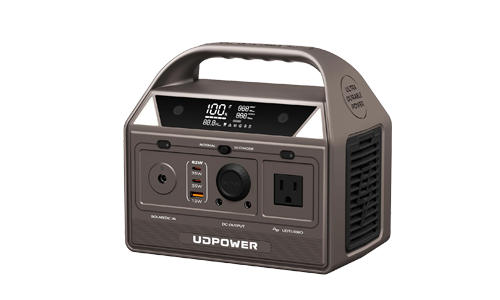
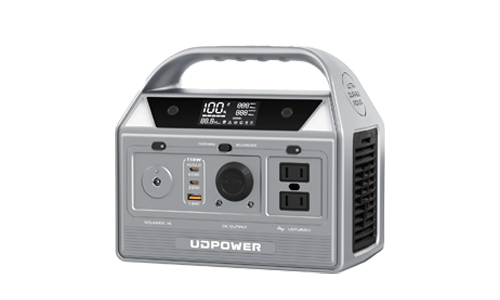
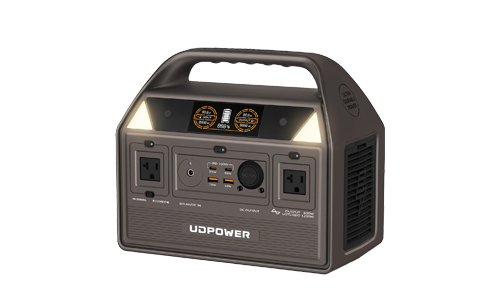
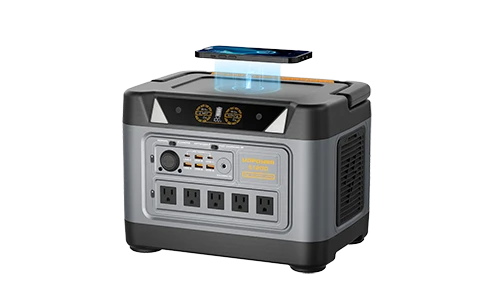
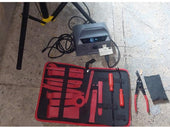

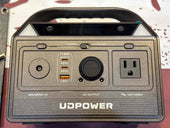
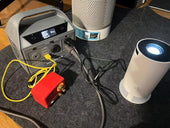
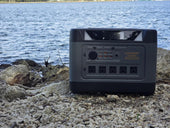
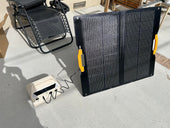














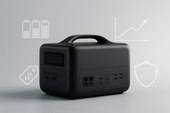

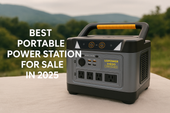





![How to Live In The Woods [Complete Guide]](http://udpwr.com/cdn/shop/articles/Off-Grid_Cabin_Option_f6c94fe7-1ae7-4c3a-baf5-ed9fe684c832.png?v=1763523215&width=170)





